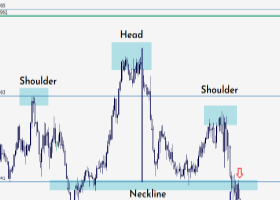
(08 MAY 2019)DAILY MARKET BRIEF 2:Chinese trade data down as trade talks are about to resume
US – China trade negotiations initiated in January 2019 are resuming tomorrow although both nations remain divided on major topics. Even if 90% of the trade pact is accepted, sticking points remain when it comes to subsidies, technology transfer, data protection and cloud technology access. Beijing is therefore facing the difficult decision to either find a compromise with its US counterpart, or accept tougher trade tariff constraints.
Markets consider the risk of an escalation in current trade conflict as Chinese Vice Premier Liu He should stay only two days in Washington although his previous visits lasted at least three. Furthermore, China is preparing retaliatory tariffs on US imports if the US would carry out its threat, which would be the worst-case scenario for the world economy. However, both sides should move closer to common ground as speculation about the reasoning behind China's recent about-face is partly due to misinterpretation of the language, since a draft agreement translated into Chinese was distributed only recently to the Politburo while comments were raised. We would therefore consider that time is running out to reach a deal, yet both sides are expected to continue negotiations in order to find an agreement that would minimize disruption on Chinese financial institutions and businesses. Chinese trade data surprised to the downside with trade surplus tightening at $13.84 billion (consensus: $34.56 billion) due to a slump in y/y exports of -2.70% (consensus: 3%), shrinking from last month 14.20%, while imports came higher-than-expected at 4% (consensus: -2.10%) and in positive territory for the first time in 5 months. The recent releases are suggesting that domestic demand remains strong, while the decline in exports is the result of current trade discord. China’s trade surplus with the US stabilized at $21 billion, below 5-year average of $23 billion.
Under current circumstances, we expect the USD/CNY to trade sideways since trade negotiations open on Thursday.
By Vincent Mivelaz


